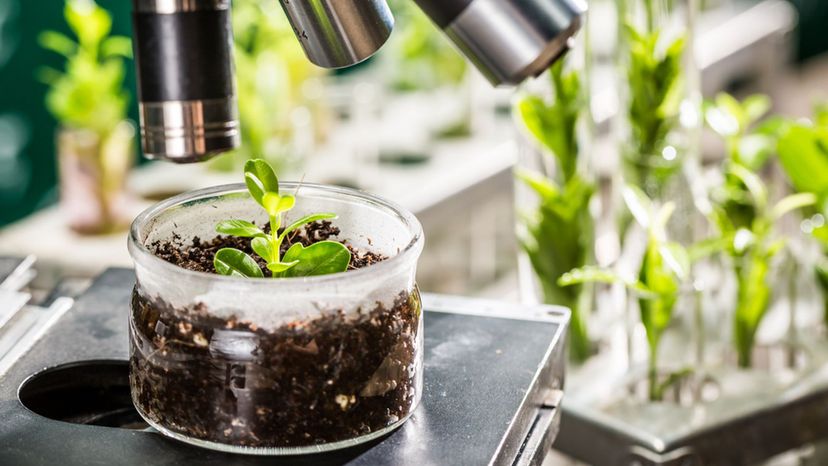
Image: Shutterstock
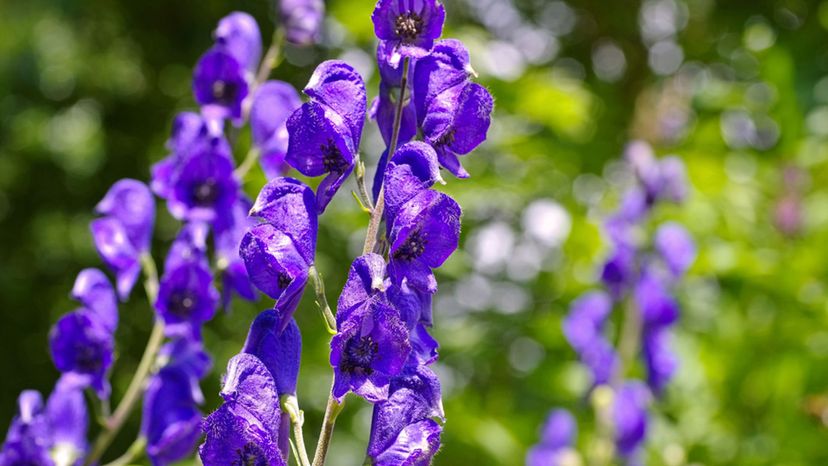
Shutterstock
Which dangerous plant for humans is shown in this image?
Crab's Eye
Monkshood
Noted for their beautiful purple flowers, Monkshood is extremely poisonous. In fact, in ancient times, it was often used to poison water or other drinks to assassinate people. All of the plant is poisonous and in 2015, a gardener in the UK died after just coming into contact with it. If ingested, Monkshood will lower blood pressure and eventually stop the heart from beating.
White Baneberry
Sabie Star
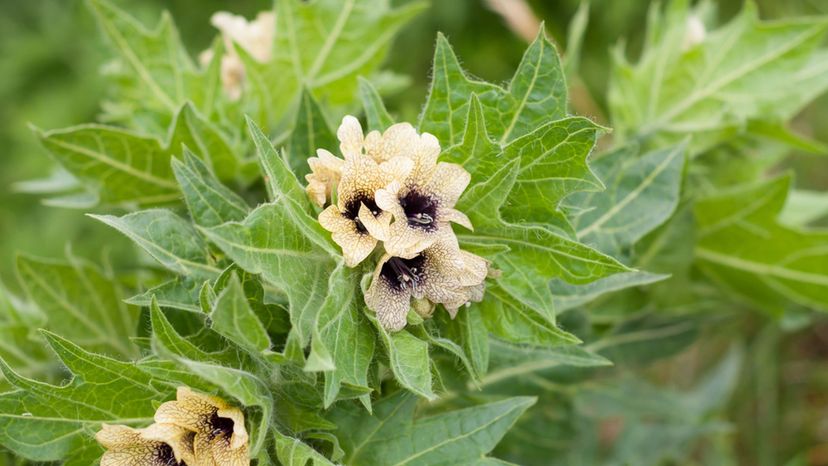
Shutterstock
Which dangerous plant for humans is shown in this image?
Black Henbane
Even the smell of the Black Henbane flower is said to cause lightheadedness although, in medieval times, the plant was used as an ingredient in the anesthetic called 'soporific sponge.' Ingesting the plant in any way can cause thirst, a dry mouth, trouble speaking, trouble swallowing, vomiting, hallucinations, and confusion. In more severe cases, it can cause convulsions or coma.
Pheasant's Eye
Horse Chestnut
White Snakeroot

Shutterstock
Which dangerous plant for humans is shown in this image?
Corn Cockle
Wood Anenome
Jimson Weed
Jimson Weed can grow up to five feet tall and produce beautiful white flowers and spiky seed pods. Due to its unpleasant taste, accidental poisoning is a rarity, although it often is ingested by thrill seekers looking to experience the effects it offers. This includes feelings of euphoria and delirium, but can also include impaired coordination, fast heart rate, seizures, hallucinations and in some cases, heart attacks.
Flamingo Flower
Advertisement
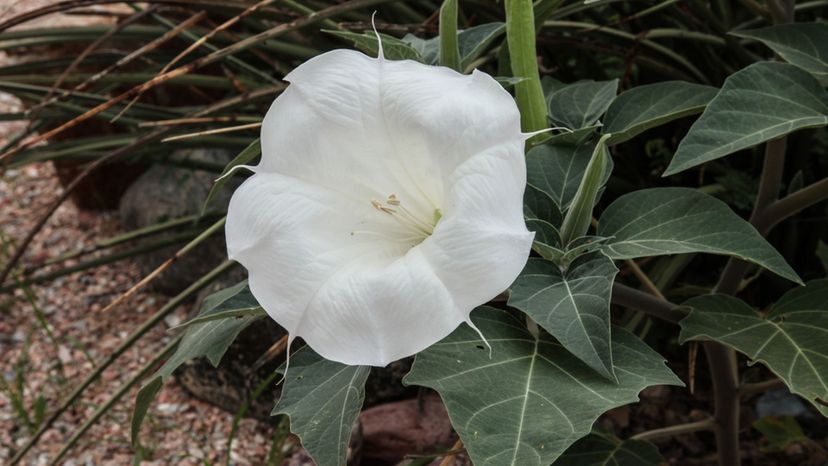
Shutterstock
Which dangerous plant for humans is shown in this image?
Sacred Datura
Part of the Nightshade family, this plant is found in Mexico, New Mexico, West Texas, Arizona, Utah, Colorado and Southern California. It was used by many native American tribes, especially when young people came of age. Ingesting it was said to call the spirits to them. Unfortunately, it can also be very dangerous to ingest this plant (often in tea form) and too much can lead to psychosis, increased heart rate, and even heart attacks.
Columbine
Betel Nut Palm
Mexican Poppy
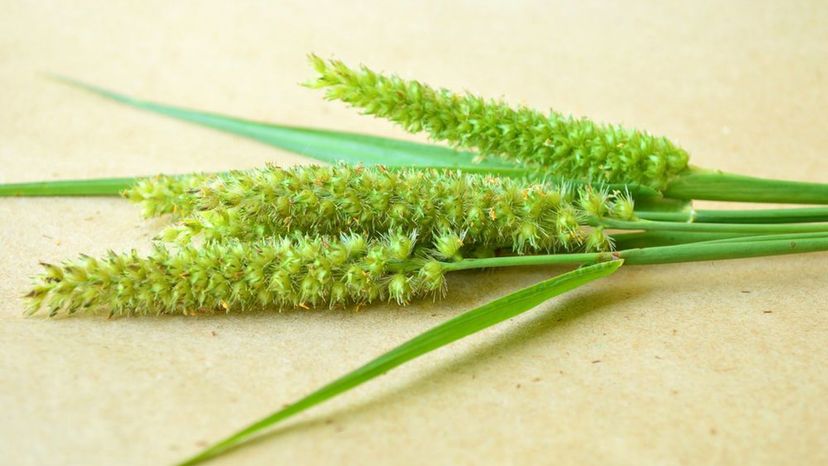
Shutterstock
Which dangerous plant for humans is shown in this image?
Wolf's Bane
Starch-Root
Belladonna
Sandbur
Although not extremely poisonous, Sandbur is a weed that can cause incredible discomfort if it manages to get into clothing, or if it breaks the skin in any way, or the burrs themselves get lodged in the skin. These should be removed and the skin washed with clean water and soap to stop further irritation. If not, a rash may occur that will need to be treated with an antiseptic cream.
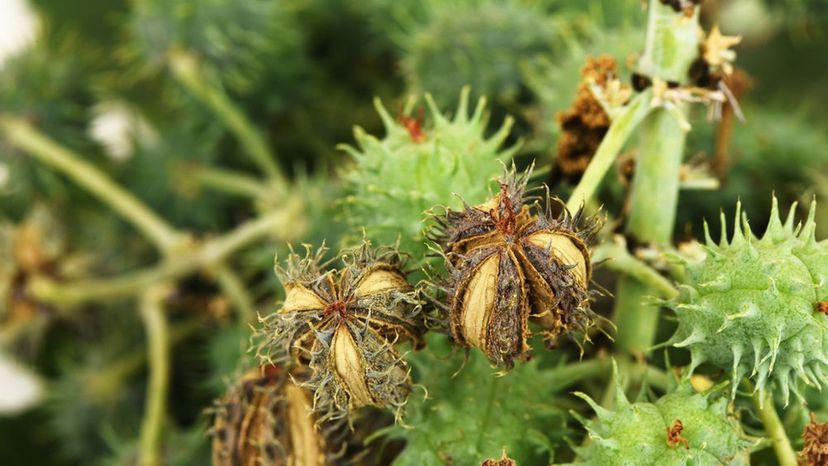
Shutterstock
Which dangerous plant for humans is shown in this image?
Castor Bean
Despite the fact that they are used to produce castor oil, the castor bean is filled with one of the most dangerous poisons known to man - ricin. Symptoms of ricin poisoning include nausea, diarrhea, vomiting, and listlessness. If no treatment is given, patients will dehydrate, their blood pressure will reduce and they will not urinate, eventually dying around five days later.
Angel's Trumpet
Elephant Ear
Wild Calla
Advertisement
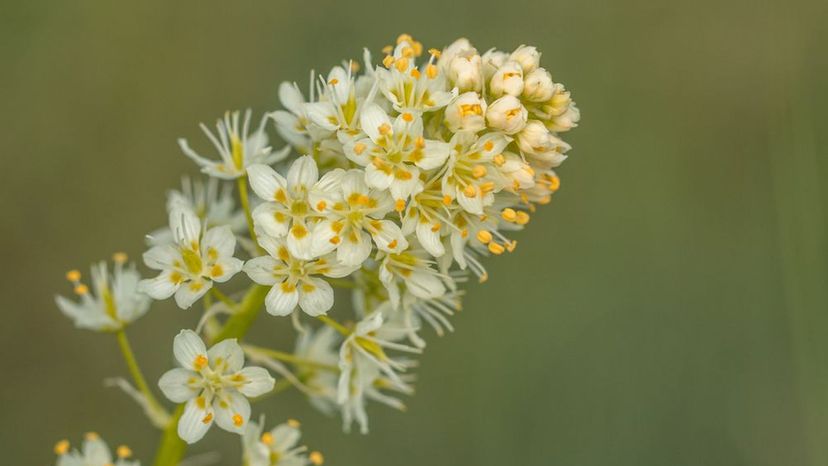
Shutterstock
Which dangerous plant for humans is shown in this image?
Kingcup
Yellow Oleander
Buttonbush
Death Camas
Reaching up to several feet in height, the Death Camas has clustering flowers that sprout off at 45-degree angles. The flower buds can sometimes be mistaken for wild onions. Once ingested, poisoning symptoms can include uncoordinated movements, loss of muscle movement, vomiting, naseau and, if untreated, death.
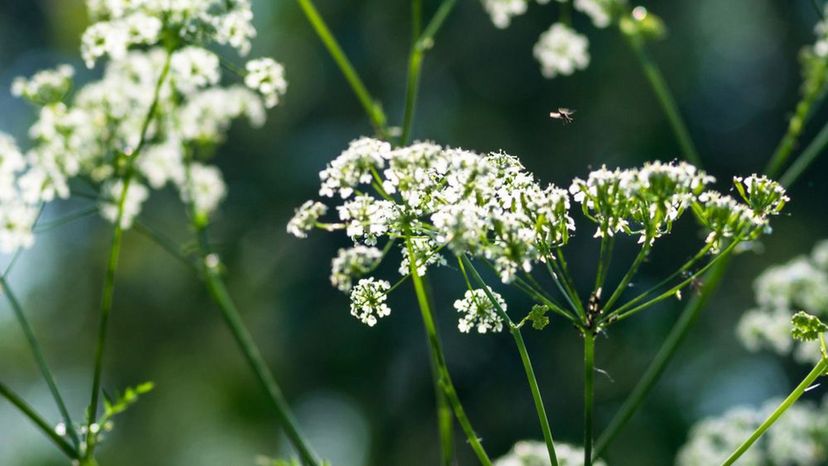
Shutterstock
Which dangerous plant for humans is shown in this image?
Suicide Tree
Greater Celandine
Water Hemlock
Containing a toxin called cicutoxin, Water Hemlock can be extremely poisonous and within a couple of minutes to six hours of ingestion, will affect the central nervous system. Symptoms include vomiting, increased heart rate, nausea, muscle twitches and dilated pupils. The plant grows up to 15 inches in length and has white flowers.
Natal Lily
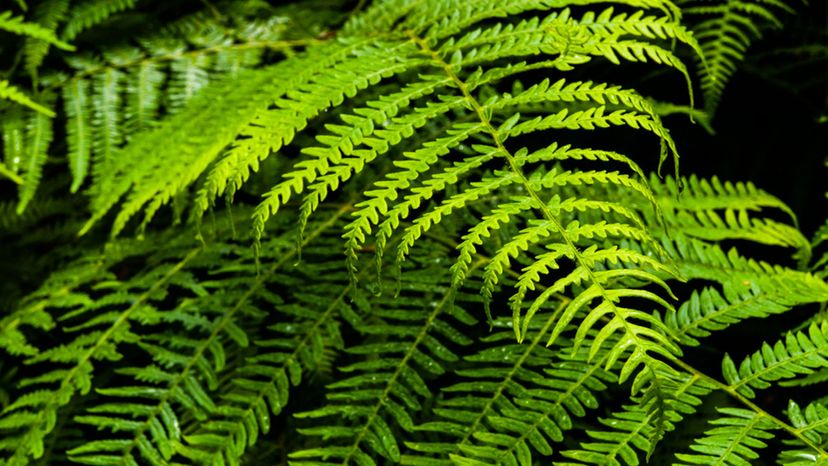
Shutterstock
Which dangerous plant for humans is shown in this image?
Bracken Fern
There is much debate around Bracken Fern. Although it is known to contain carcinogens, which can cause cancer in living tissue, some people choose to eat this as a wild plant. In fact, it is actively consumed by native Americans and in the Far East, although studies have suggested that the fact these groups have higher than average rates of intestinal cancer might be becasue of this.
Meadow Saffron
Larkspur
Moon Flower
Advertisement
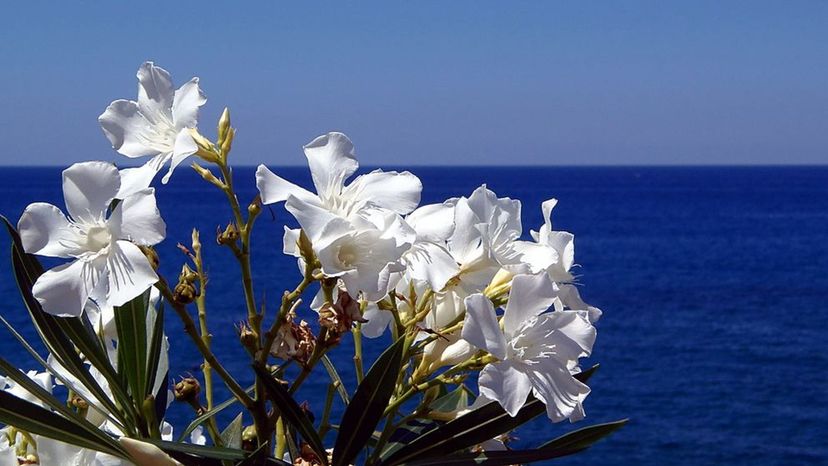
Shutterstock
Which dangerous plant for humans is shown in this image?
Stink Weed
Oleander
Although common in gardens across the world, Oleander is actually very poisonous. Even ingesting a small part of the plant can prove fatal, especially to children. Ingesting the plant can cause lowering of blood pressure, slower heart beat, blurred vision, diarrhea, nausea, vomiting, confusion, dizziness, and many other symptoms. In Sri Lanka, Oleander is used as a way to commit suicide, with over150 cases occurring per year.
Wild Carrot
Larkspur
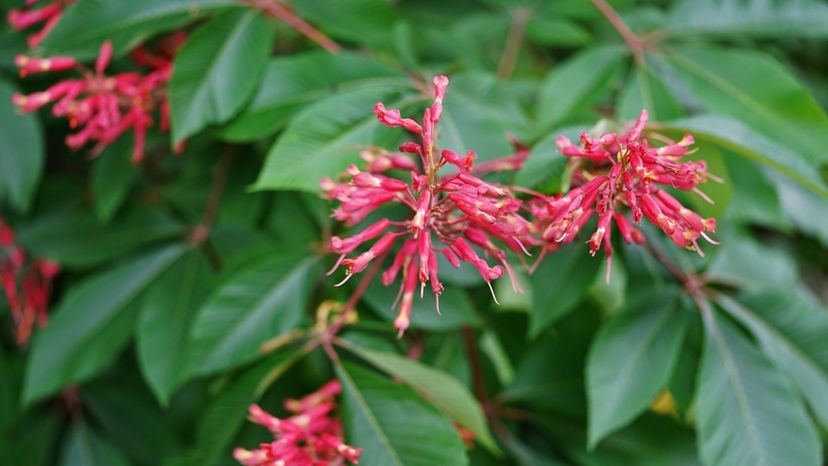
Shutterstock
Which dangerous plant for humans is shown in this image?
Dutchman's Breeches
Gifblaar
Dumbcane
Buckeye
A small shrub, Buckeye has a poisonous compound within. It is called aesculin and is known to cause many gastrointestinal problems. This includes diarrhea, vomiting, ataxia, and can include paralysis.
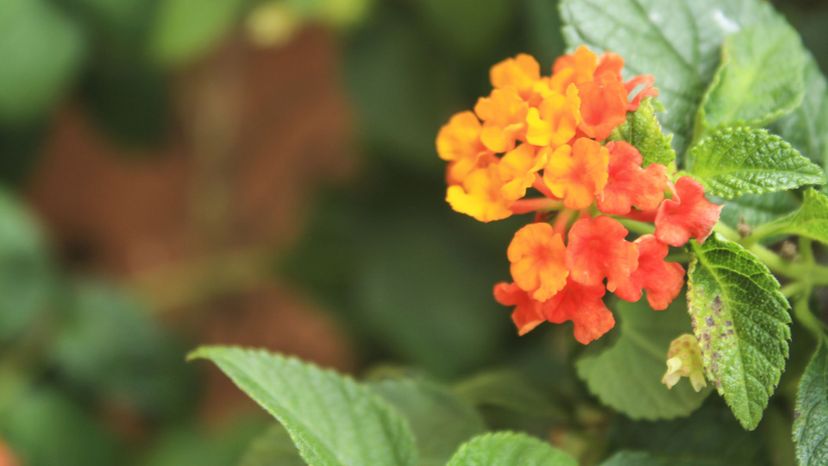
Shutterstock
Which dangerous plant for humans is shown in this image?
Lantana
The berries from the Lantana plant should never be consumed. These green berries (red when ripened) are known to poison pets and livestock and can cause liver damage. When consumed by humans, normally children because of the berries' appeal, they can cause vomiting and diarrhea.
Foxglove
Black Bryony
Pigeon Berry
Advertisement

Shutterstock
Which dangerous plant for humans is shown in this image?
Wallflower
White Snakeroot
White Snakeroot is filled with tremetol, a toxin that is extremely poisonous when consumed, either directly or secondhand. This second-hand consumption can be in the form of milk from dairy cows that might have eaten the plant, although modern dairy cows are simply not exposed as in previous generations. Abraham Lincoln's mother died from drinking milk from a cow that had eaten Snakeroot plants.
European Spindle
Poinsettia
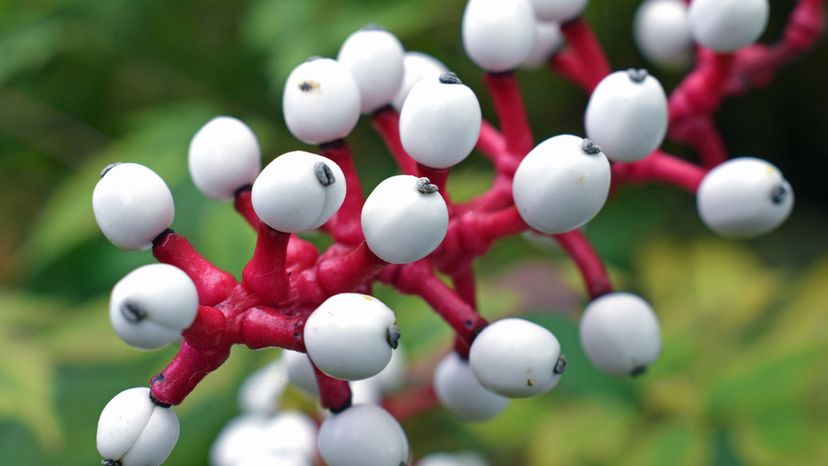
Shutterstock
Which dangerous plant for humans is shown in this image?
Milky Mangrove
Snow Drop
Yellow Jessamine
Doll's Eyes
Also known as the White Baneberry, this creepy-looking plant is filled with cardiogenic toxins. When consumed, these toxins will immediately affect the muscle tissue around the heart, which can lead to death by heart attack. Other symptoms include cramps, diarrhea, hallucinations, and dizziness.
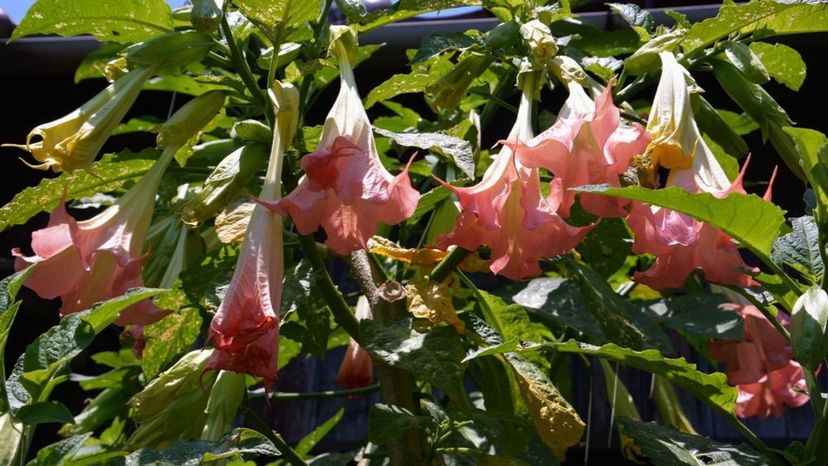
Shutterstock
Which dangerous plant for humans is shown in this image?
Flame Lily
Spider Flower
Angel's Trumpets
Angel's Trumpets are noted for their beautiful flowers that look like trumpets. Despite their beauty, they are very dangerous and can cause death if any part of the plant is ingested. Symptoms include a feeling of weakness, dry mouth, hallucinations, elevated heart rate and paralysis that might lead to a coma and even death. If you want to grow these plants, you should wear protective clothing, such as gloves and eyewear.
Common Ivy
Advertisement
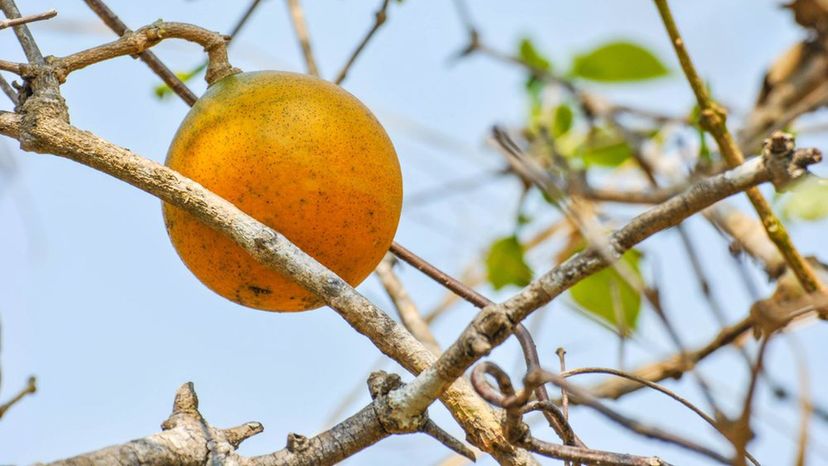
Shutterstock
Which dangerous plant for humans is shown in this image?
Strychnine Tree
Legend has it that Queen Cleopatra made servants eat seeds from this tree to see how they died to see if she could use it for her suicide. After seeing their suffering, she chose a bite from an Asp instead. Just 30mg of strychnine alkaloids found in the seeds can prove fatal. Those who have consumed the seeds suffer from violent convulsions until death.
Christmas Rose
Giant Hogweed
Manchineel
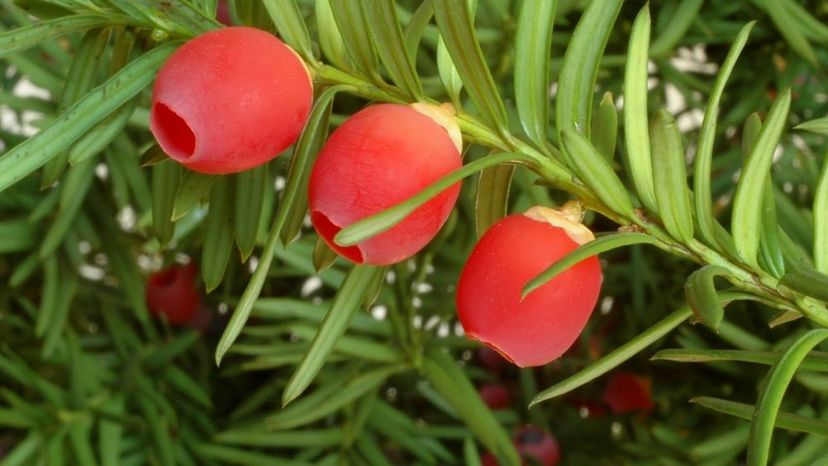
Shutterstock
Which dangerous plant for humans is shown in this image?
Privet
Strychnine Tree
Tobacco
English Yew
All parts of the English Yew plant are toxic to humans. The seeds in particular are very toxic to most animals, including horses, cattle, pigs and other livestock.
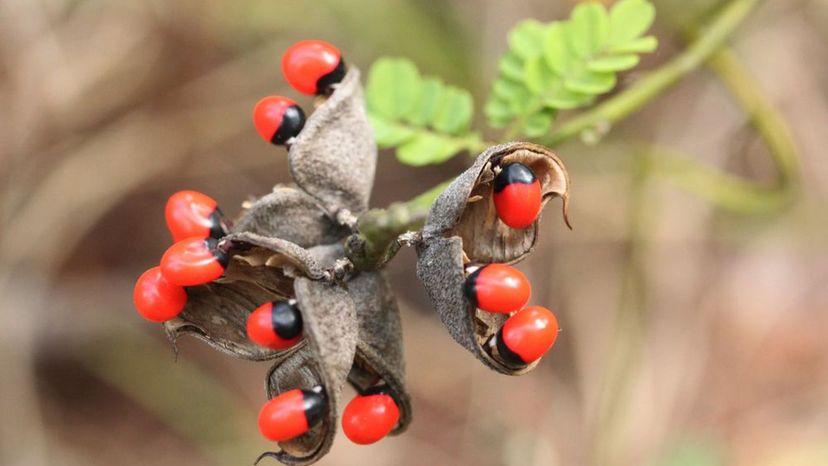
Shutterstock
Which dangerous plant for humans is shown in this image?
Rosary Pea
Despite the fact that they are poisonous, the Rosary Pea is used in jewelry and as its name would suggest, in the manufacture of rosary beads. The seed itself contains the toxin which only makes it dangerous when the skin is scratched open. Ingesting a whole pea would not lead to poisoning. However, there have been reports of jewelers who have died while working with these seeds.
Ragwort
Mother Of Millions
Mountain Laurel
Advertisement
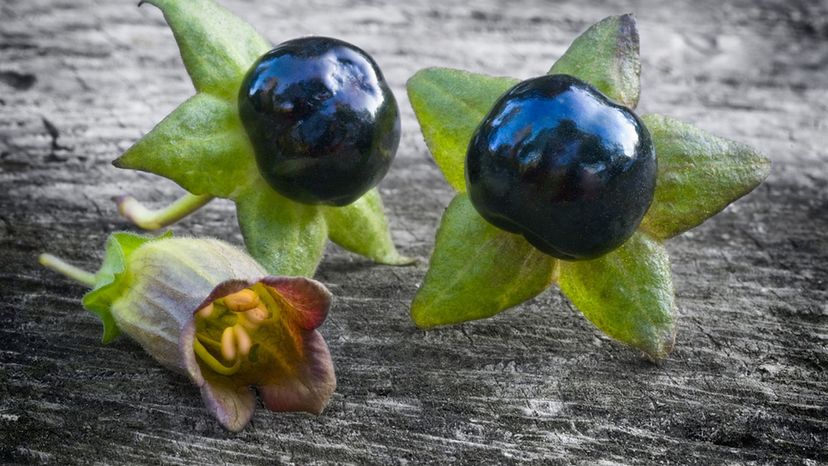
Shutterstock
Which dangerous plant for humans is shown in this image?
Golden Chain
Bleeding Heart
Tick Berry
Belladonna
Belladonna, or Deadly Nightshade, contains two poisons, atropine and scopolamine, throughout the plant. These attack the nervous system and eventually can paralyze nerve endings, especially in the heart, gastric area, and blood vessels. Only two berries would be sufficient to kill a child, while an adult would have to consume between 10 to 20.
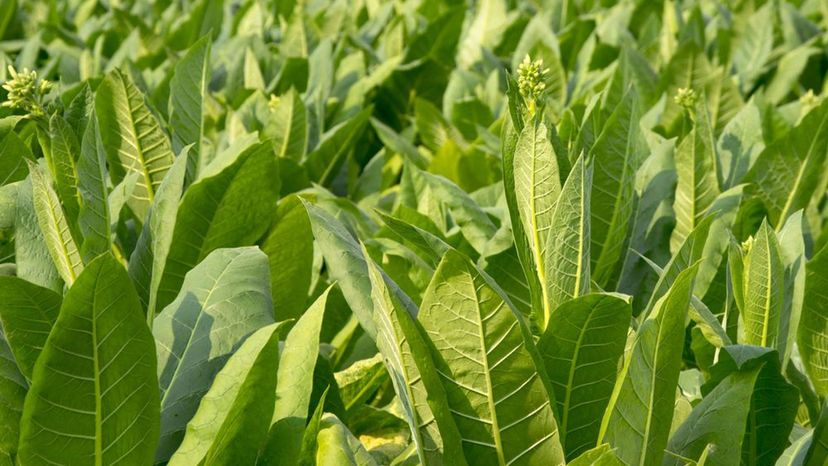
Shutterstock
Which dangerous plant for humans is shown in this image?
Privet
Poison Ryegrass
Tobacco
Although used by millions around the world every day, the nicotine in tobacco is very toxic for our bodies. It is strictly regulated in the tobacco industry and interestingly, 60mg of it can kill. Of course, to get a lethal dose is difficult. It would take consuming 40 cigarettes, or 15 pieces of nicotine gum, at the same time. Poisoning often happens in children who may drink the liquid from electronic cigarettes, or eat a piece of gum thinking it is chewing gum.
Lupine
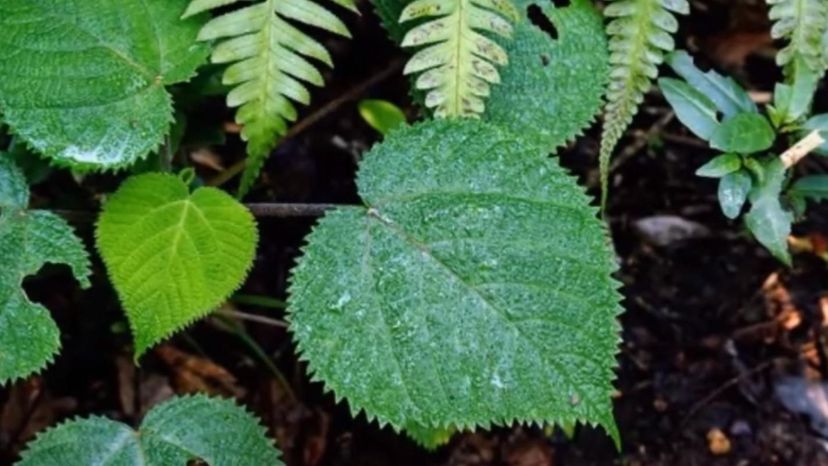
YouTube
Which dangerous plant for humans is shown in this image?
Stinging Tree
Dendrocnide Moroides, or the Stinging Tree, is only found in Australia and parts of Indonesia. It is the most poisonous type of nettle found on earth and a mere touch can lead to agony for up to a month in some cases. Luckily, there are no recorded cases of deaths in humans caused by the plant, although it has been known to cause severe allergic reactions in dogs, pigs, and other smaller animals.
Mandrake
Honeybush
Pennyroyal
Advertisement
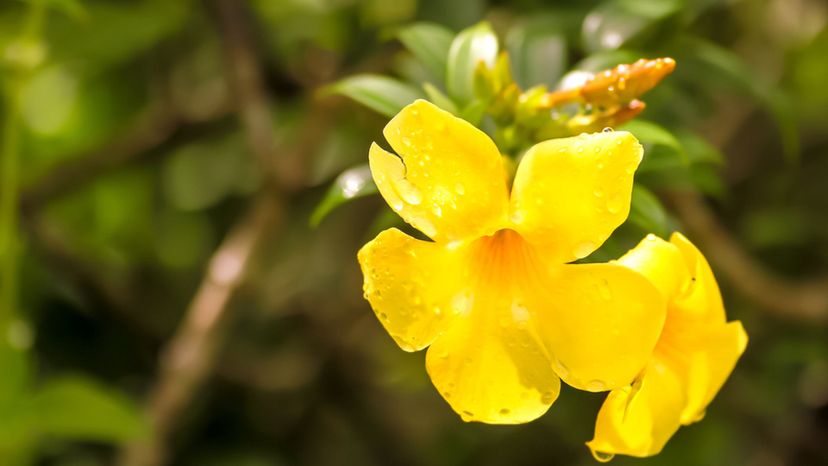
Shutterstock
Which dangerous plant for humans is shown in this image?
Apple-of-Peru
Jessamine
Also known as Carolina or Yellow Jessamine, this plant is poisonous, both to animals (dogs in particular) and humans. It carries gelsemium, an alkaloid toxin which can cause overall weakness (especially muscles) and lead to paralysis. Other symptoms include seizures and breathing problems, which can occasionally lead to death.
Hemlock Water Dropwort
Blue Passion Flower
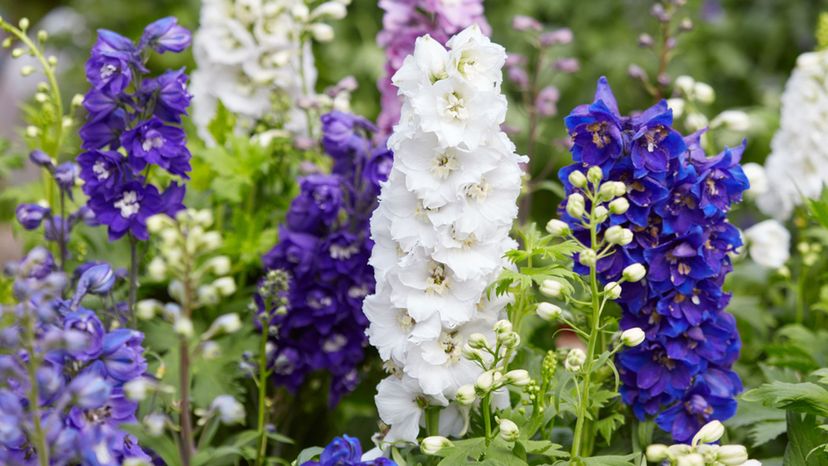
Shutterstock
Which dangerous plant for humans is shown in this image?
Blister Bush
American Mistletoe
Larkspur
Larkspur can be fatal if ingested, especially if the plant is still fairly young. It contains many alkaloid toxins such as ajacine, delphineidine delphinine to name a few. Those who have been poisoned by the plant will first experience nausea, vomiting and muscle weakness. Depending on how much they have ingested, and whether they receive treatment, it could lead to breathing problems, paralysis and eventually, death.
Calabar Bean
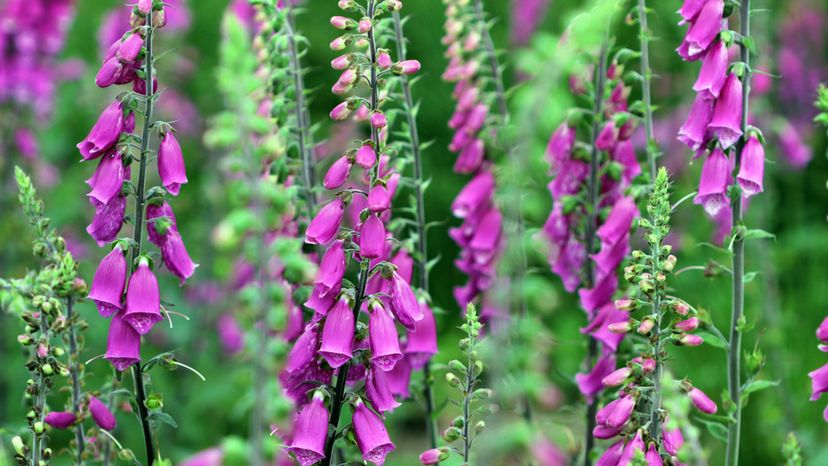
Shutterstock
Which dangerous plant for humans is shown in this image?
Pokeweed
Foxglove
This plant with its beautiful purple and white flowers can be poisonous when any portion of it is eaten, or the flowers sucked for their nectar. Foxglove includes three different toxins - digitoxin, digitalis glycoside and deslanoside. Ingesting the plant can lead to a range of symptoms, depending on how much was eaten. These include low blood pressure, irregular heartbeat, sight problems, confusion, nausea, vomiting, upset stomach and many others.
Japanese Pieris
Mayapple
Advertisement
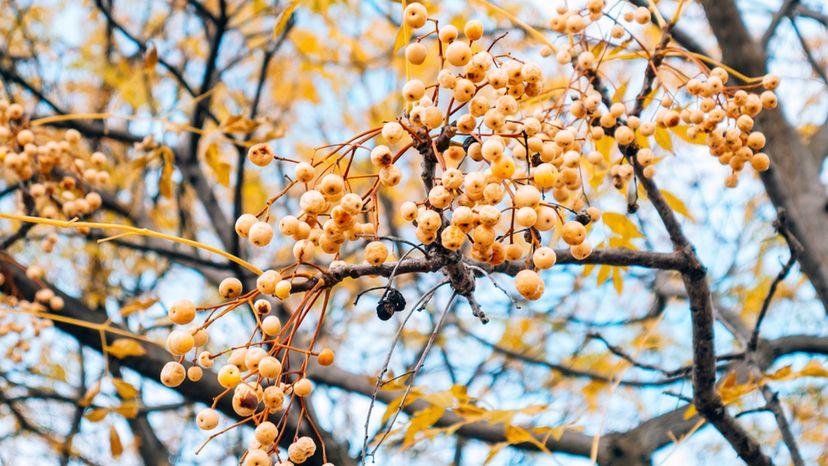
Shutterstock
Which dangerous plant for humans is shown in this image?
Cherry Laurel
Mayday Tree
Prairie Crocus
Melia Azedarach
Also known as the White Cedar, this tree is part of the mahogany family. Although beautiful, consuming only around eight berries from this tree can cause death. In fact, the berries contain a mixture of poisons. Birds, however, are not affected by the poison and this is how seeds are spread.
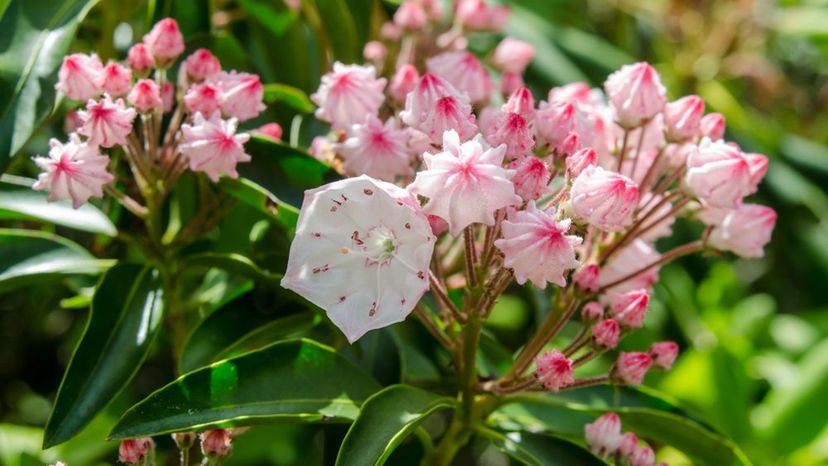
Shutterstock
Which dangerous plant for humans is shown in this image?
Buckthorn
Alpenrose
Mountain Laurel
Most of this shrub is poisonous and unfortunately, the pretty flowers often attract children. The nectar within these flowers can quickly make anyone who has tried to consume it feel ill. Symptoms include a runny nose, stomach pains and vomiting, all depending on how much toxin was consumed. The plant can be fatal to animals, including dogs, pigs, and goats.
Honeysuckle Azalea
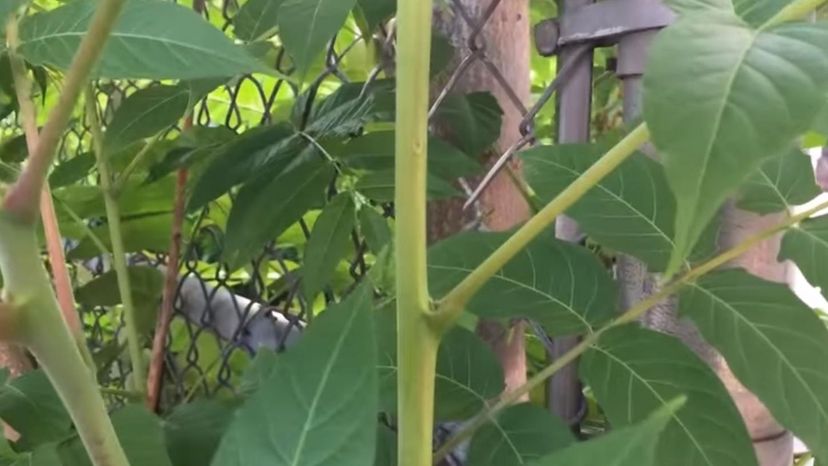
YouTube
Which dangerous plant for humans is shown in this image?
Wild Rosemary
Poison Sumac
This woody shrub, which can sometimes be classified as a small tree, is often found in swamps, forests and other wet areas. If bare skin comes into contact with the plant, or, even worse, the oil from the leaves, then skin irritations, burning and possibly severe allergic reactions can occur. In severe cases, blisters can form. In some cases, these symptoms can last for weeks.
Palma Christi
Black Locust
Advertisement
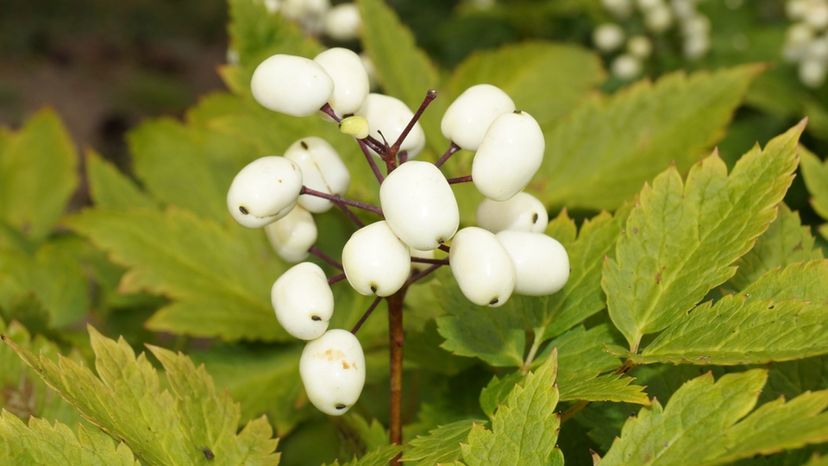
Shutterstock
Which dangerous plant for humans is shown in this image?
White Baneberry
This wildflower is found in forests in the eastern half of North America. The fruit, which is white with a black dot, is extremely poisonous and can kill humans. Ingesting as few as six of these is enough to cause a heart attack. Luckily, the fruit is particularly ugly to look at so not likely to draw a child in to try one.
Bloodroot
Henbane Bell
Bittersweet Nightshade
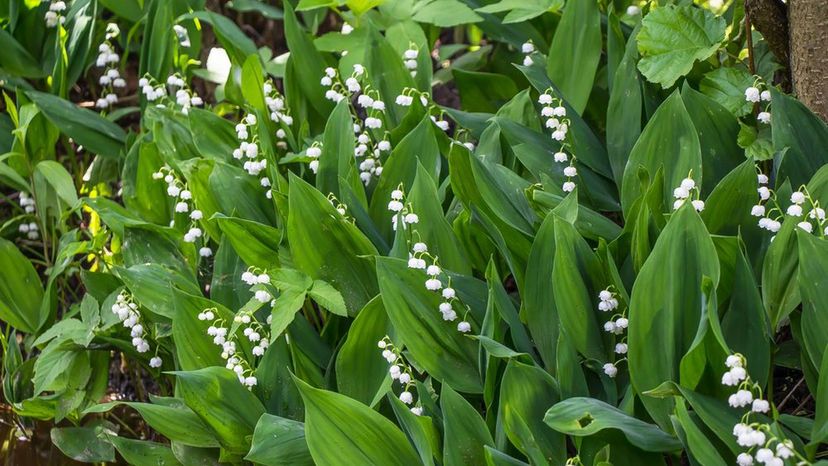
Shutterstock
Which dangerous plant for humans is shown in this image?
Black Nightshade
Jerusalem Cherry
Texas Mountain Laurel.
Lily of the Valley
This plant grows in large colonies and features fairly small berries that are reddish orange, and bell-shaped flowers that have a beautiful, sweet smell. Don't be fooled, however, as this plant is certainly poisonous. Ingesting it leads to impaired vision, nausea, upset stomach (with both vomiting and diarrhea), headaches, confusion and cardiac problems that can lead to death.
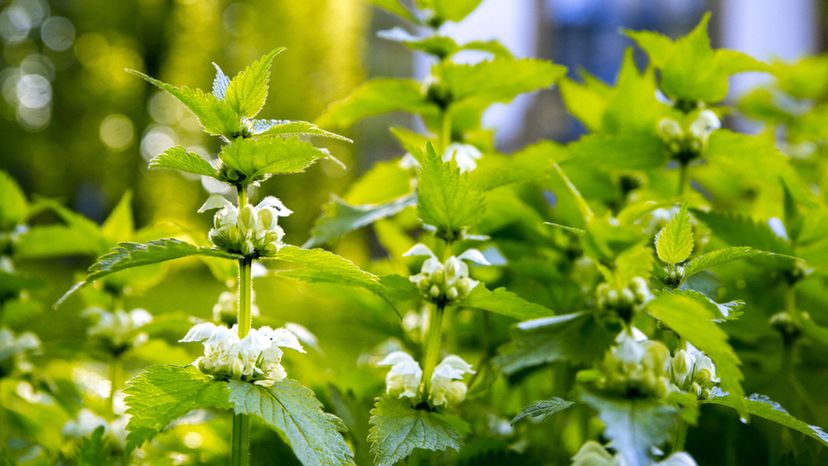
Shutterstock
Which dangerous plant for humans is shown in this image?
Graveyard Tree
Poison Ivy
Stinging Nettles
Stinging Nettles can cause a very painful sting if you brush past them with open skin. This is initially caused by formic acid but continues sometimes for hours afterward through the presence of acetylcholine, 5-hydroxytryptamine, and histamine. The nettles themselves have small hairs that act as syringes, each delivering its cargo of pain.
Ongaonga
Advertisement

Shutterstock
Which dangerous plant for humans is shown in this image?
Poison Ivy
Filled with a substance called Urushiol, Poison Ivy plants can leave a nasty rash if touched against bare skin. This rash can last for a few weeks. The plant appears similar to a vine and is found throughout America, next to rivers, along roadsides. Depending on the season, this plant's flowers can be green or yellow and its berries are colored the same.
Chinese Wisteria
Cocklebur
Calla Lily

Shutterstock
Which dangerous plant for humans is shown in this image?
Jumbie Bead
Azaleas
Azaleas are a favorite of many gardeners thanks to their beautiful flowers. But these plants are poisonous. Of course, children are the most at risk, particularly because these plants are so pretty and attractive. Symptoms of azalea poisoning include irritations in the mouth, vomiting, and nausea, although one would have to ingest a large amount for any serious poisoning to occur.
Aconite
Sabi Star
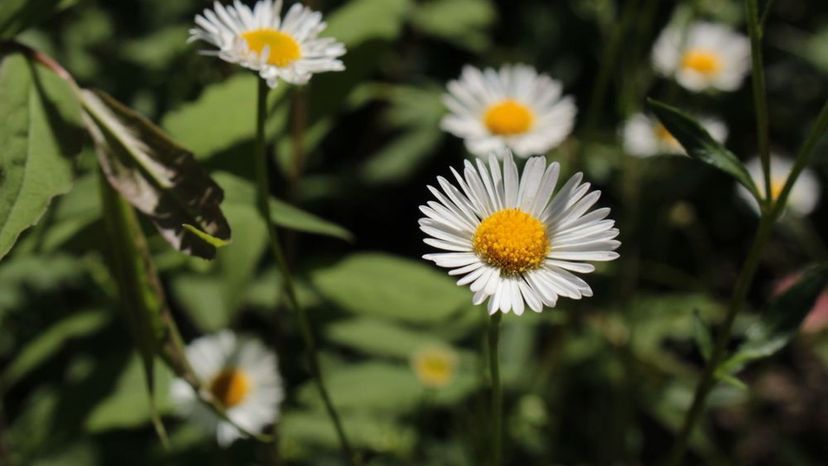
Shutterstock
Which dangerous plant for humans is shown in this image?
Fleabane
Part of the daisy family, Fleabane is noted for its white petals and yellow inside section. Fleabane is potentially very toxic to dogs, cats, and horses. It is sometimes called Showy Daisy, Horseweed or Seaside Daisy.
Cardosanto
Wake Robin
Dwale
Advertisement

Shutterstock
Which dangerous plant for humans is shown in this image?
Starch Root
Devil's Cherry
Rhododendrons
All parts of this plant are poisonous and contain a number of toxins, including acetylandromedol, andromedotoxin, grayanotoxin, and rhodotoxin. These are mostly ingested from the nectar in the flower, which has the highest toxin concentration. The plant is far more dangerous to animals than humans but can still cause a number of unpleasant symptoms, including stomach pains, vomiting, diarrhea, slow heart rate and exhaustion.
Heart of Jesus
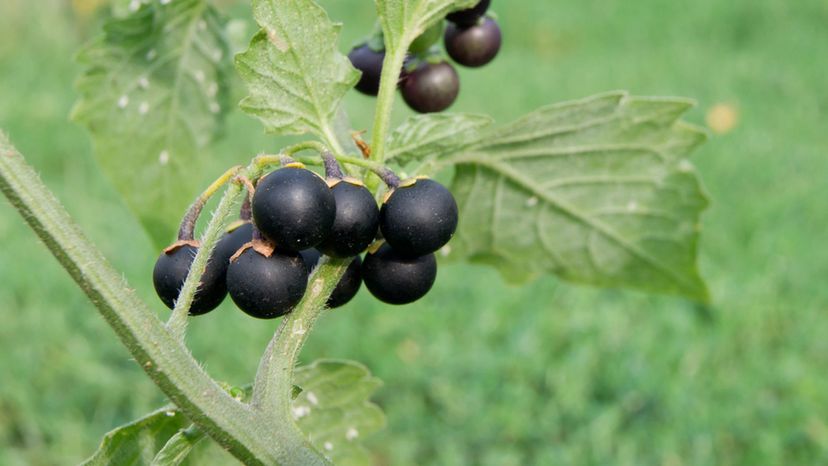
Shutterstock
Which dangerous plant for humans is shown in this image?
Jack in the Pulpit
Black Nightshade
Considered a weed, this plant's unripened black berries are very poisonous. This is caused by a series of toxins within the plant, including solamargine, solanine, gitogenin, and solasonine, among others. When ingested, the plant will cause slower breathing, vomiting, diarrhea, fever, hallucinations, sweating, and paralysis.
King Cup
Button Bush
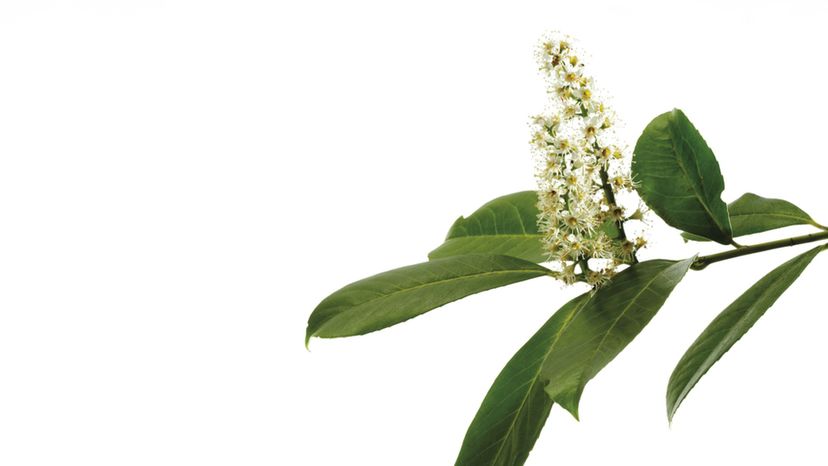
Shutterstock
Which dangerous plant for humans is shown in this image?
Death of Man
Variegated Croton
Autumn Crocus
Carolina Laurel Cherry
This shrub contains cyanolipids, especially in the leaves and tips of its fruit. When eaten, these release two toxins, cyanide and benzaldehyde. If enough of these are eaten, they can cause breathing problems as the central nervous is starved of oxygen, eventually leading to death.
Advertisement

Shutterstock
Which dangerous plant for humans is shown in this image?
Spotted Parsley
Cestrum
This shrub grows fairly large and is poisonous, mainly to cats, dogs and cattle. It produces shiny black berries that are normally ingested by animals and sometimes humans. Ingesting them eventually leads to liver failure in animals.
Larkspur
Bad-man's Oatmeal

Shutterstock
Which dangerous plant for humans is shown in this image?
Checkered Lily
Also known as the Snake's Head Fritillary or the Guinea Hen Flower, the Checkered Lily is striking. It has a beautiful maroon flower which is marked by a white checkerboard pattern. Although it is said these plants are poisonous, there is not much evidence to suggest this. Don't ingest them, however. The flower is associated with misfortune and that could be why it is thought to be poisonous.
Ruti
Kudi
Doll's Eyes
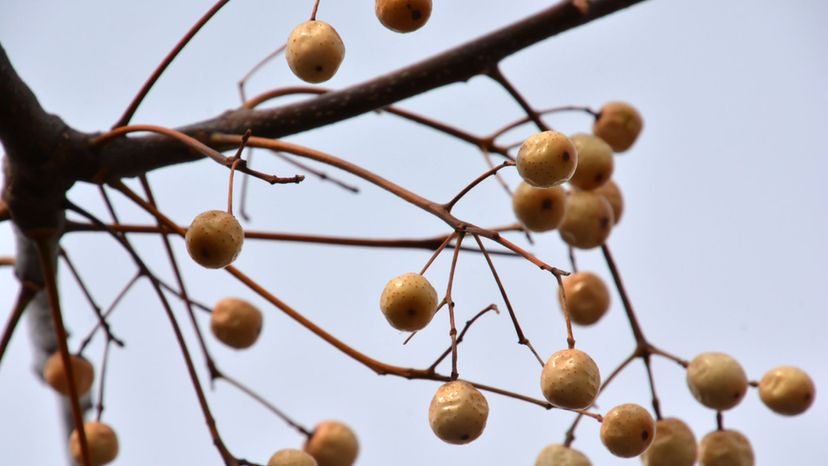
Shutterstock
Which dangerous plant for humans is shown in this image?
Flowering Thistle
Adam and Eve
Belladonna
Chinaberry
Also known as the China Tree or the Pride of India, this tree can grow up to 50 feet tall. Its fruit takes the form of yellow berries which, when dried, can be used in jewelry. In many cases, they have been used as a narcotic and can prove fatal to small animals, such as dogs and cats, and can cause complications if ingested by humans.
Advertisement
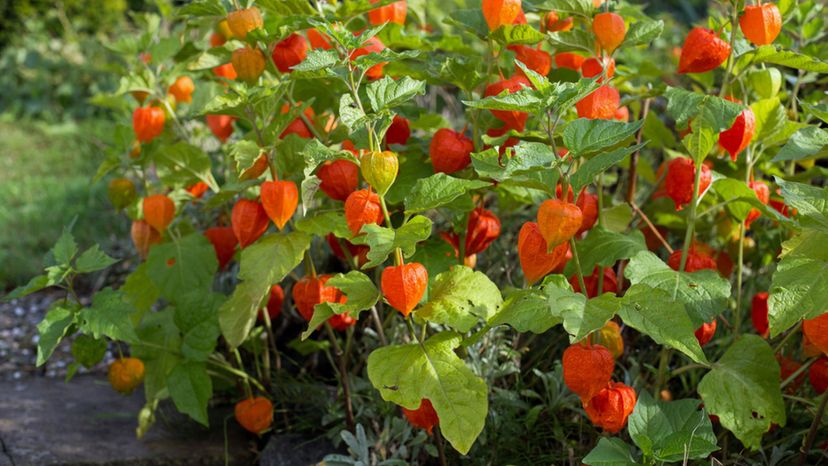
Shutterstock
Which dangerous plant for humans is shown in this image?
Chinese Lantern
With its beautiful dark green leaves and red, lantern shaped flowers, the Chinese Lantern certainly stands out. It is the berries of this plant, particularly when unripe, that can cause poisoning. Once ingested, they may cause the following symptoms - stomach pains, headache, vomiting, diarrhea, dilated pupils, lowering of body temperature, overall numbness, and respiratory problems.
Elephant Ear
Water Arum
Marsh Marigold
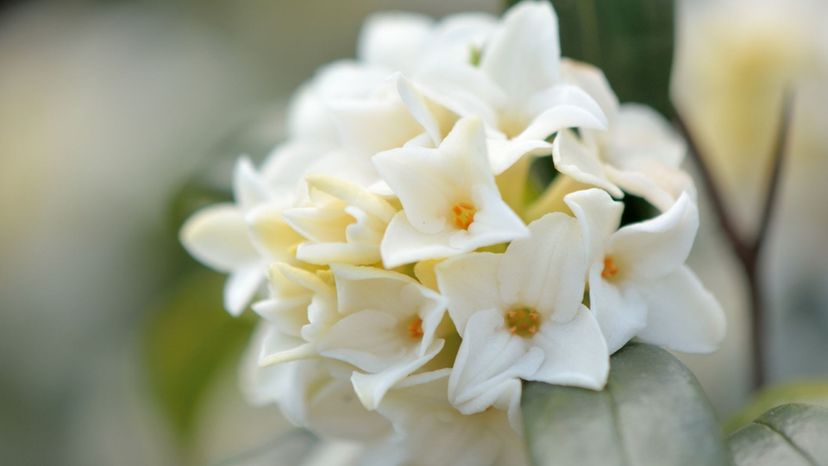
Shutterstock
Which dangerous plant for humans is shown in this image?
Yellow Oleander
Button Bush
Daphne
Although this plant is particularly popular, not many people realize that it is poisonous. This small shrub stands about 1.5m tall and all of it is poisonous, although the highest concentration appears in berries, bark and tree sap. Some toxins in the plant include Mezerein and Daphne as well as other cancer-causing compounds. Symptoms include nausea and vomiting, while severe symptoms include coma and death.
Greater Celandine
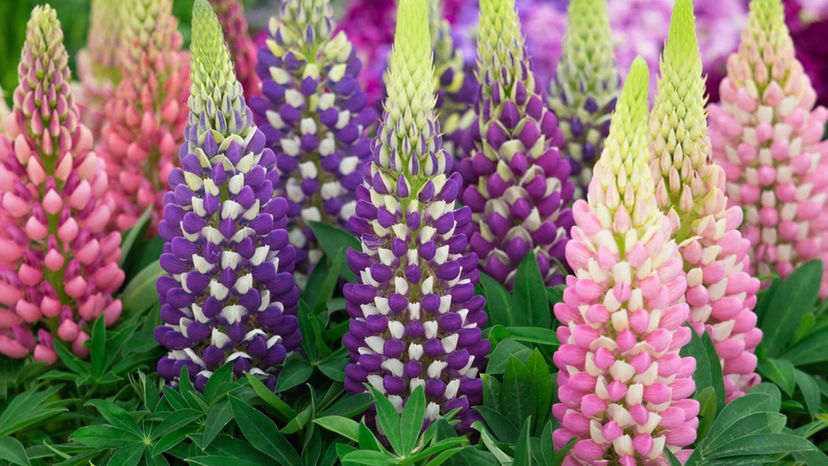
Shutterstock
Which dangerous plant for humans is shown in this image?
Children's Bane
Lupine
Despite their incredible beauty, Lupines contain toxins in the form of alkaloids and enzyme inhibitors. When seeds or pods are ingested, they can cause numbness, drowsiness, nausea, fever, headaches, convulsion, and even comas that could prove fatal.
Variegated Croton
Beaver Poison
Advertisement
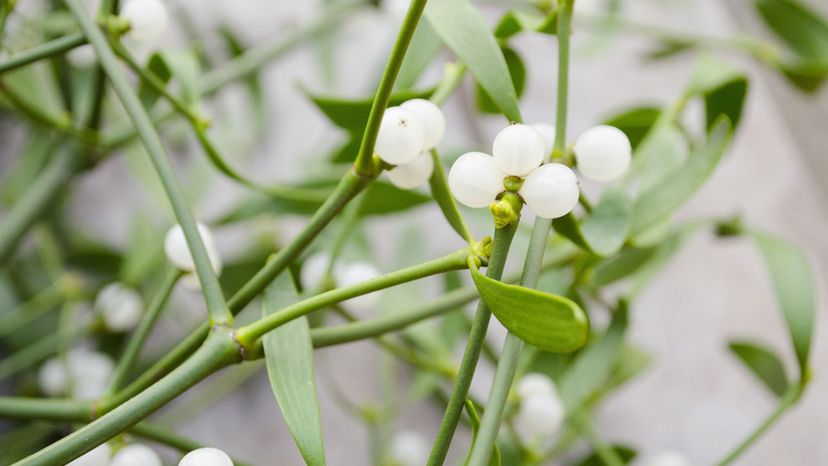
Shutterstock
Which dangerous plant for humans is shown in this image?
Redoul
Common Broom
Thorn Apple
European Mistletoe
This tree is actually a parasite, growing together with another host. Despite its association with the festive season, it is poisonous. If ingested, particularly the berries, someone may experience a number of symptoms, including nausea, stomach pain, vomiting, weakness, and drowsiness.
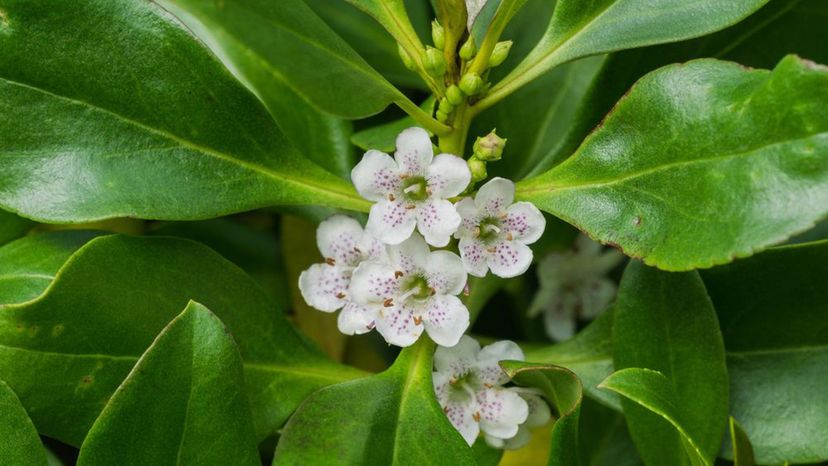
Shutterstock
Which dangerous plant for humans is shown in this image?
Myoporum
Part of the Figwort family, there are many different varieties of Myoporum. In the case of Myoporum Laetum, ingesting the plant and its berries, in particular, will lead to stomach problems, convulsions, and even death, particularly in animals and livestock.
Wild Carrot
Stinging Tree
Gympie Gympie
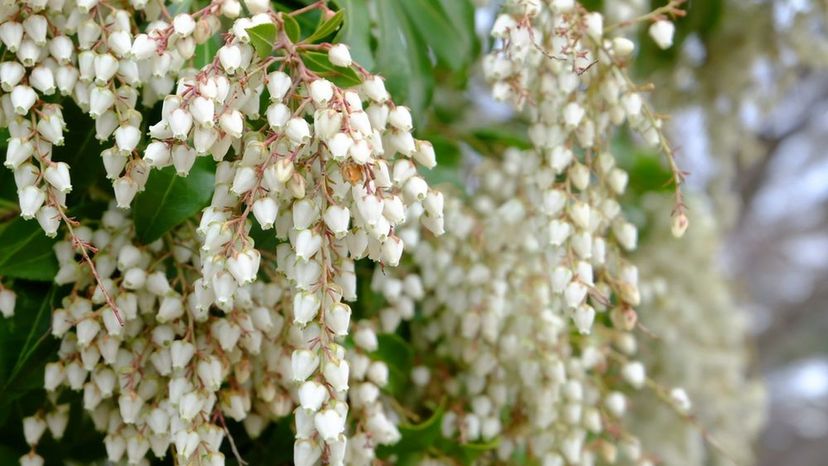
Shutterstock
Which dangerous plant for humans is shown in this image?
Stinkweed
Japanese Pieris
This beautiful plant with small white leaves is a danger for pets and livestock. Once ingested, the animals will pant excessively, vomit and suffer from abdominal pain. The plant itself is filled with up to 30 different cardiac glycosides that can cause severe heart problems if ingested by humans. It is also known as Lily of the Valley.
Gifblaar
Skyflower
Advertisement
You Got:
/45
Shutterstock